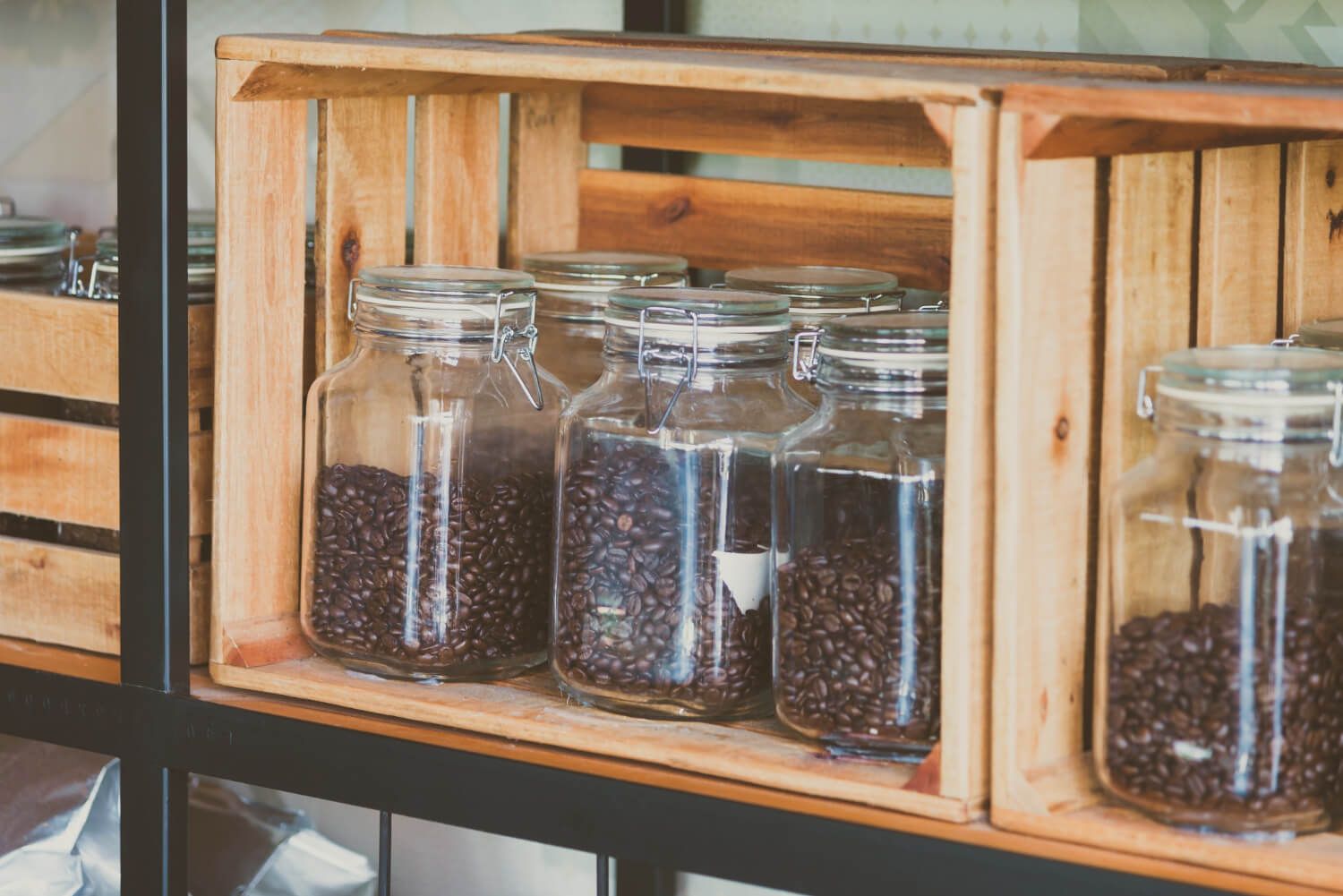Coffee, whether in bean or ground form, is a staple in many households. However, not everyone knows the best ways to store their coffee to maintain its freshness and flavor.
This micro-post will guide you through the different types of coffee storage and provide tips for keeping your coffee at its best.
Jump To:
- Understanding Coffee Freshness
- The Enemies of Coffee: Air, Moisture, Heat, and Light
- Choosing the Right Coffee Storage Container
- Different Types of Coffee: Storage Needs
- Best Practices for Storing Coffee Beans
- Best Practices for Storing Ground Coffee
- Common Mistakes in Coffee Storage
- Conclusion
- Frequently Asked Questions
- Further Reading
Understanding Coffee Freshness
Coffee freshness is a crucial factor that significantly influences the taste of your brew. When coffee beans are roasted, they undergo a process known as degassing, which releases carbon dioxide over time. This degassing process is a clear indication of coffee freshness. However, once the carbon dioxide is depleted, the beans begin to stale as oxygen starts to break down the flavorful oils within the beans.
The staling process is inevitable but can be slowed down significantly with proper storage. Understanding how to store different types of coffee, from whole beans to grounds, can help maintain their freshness for a more extended period, ensuring a flavorful cup every time you brew.
The Enemies of Coffee: Air, Moisture, Heat, and Light
When it comes to coffee storage, four main factors can negatively impact your coffee's freshness and flavor: air, moisture, heat, and light.
Air: Oxygen is one of the primary causes of coffee staling. When coffee is exposed to air, it speeds up the oxidation process, causing the coffee to lose its flavor rapidly.
Moisture: Coffee beans are hygroscopic, meaning they readily absorb environmental moisture. When coffee beans come into contact with moisture, it can lead to mold growth and a stale taste.
Heat: High temperatures can cause coffee beans to lose their flavor and become stale more quickly. It's essential to store your coffee in a cool location to preserve its freshness.
Light: Light, especially direct sunlight, can degrade the quality of coffee beans. It's best to store your coffee in a dark place or an opaque container to protect it from light exposure.
Choosing the Right Coffee Storage Container
The type of container you choose to store your coffee can significantly impact its freshness. The ideal coffee storage container should be airtight, opaque, and kept in a cool, dry place.
Airtight containers prevent air from entering and moisture from accumulating inside, both of which can lead to faster staling. Opaque containers protect your coffee from harmful light exposure. Glass or clear containers should be avoided unless they are stored in a dark cabinet or pantry.
Different Types of Coffee: Storage Needs
Different types of coffee have different storage needs. Here are some guidelines for storing various types of coffee:
Whole Bean Coffee: Whole bean coffee stays fresh longer than other forms because it has a smaller surface area exposed to oxygen. Store whole bean coffee in an airtight container away from light, heat, and moisture.
Ground Coffee: Ground coffee stales faster than whole beans because it has a larger surface area exposed to oxygen. It should be stored in an airtight container and used within two weeks of opening for the best flavor.
Instant Coffee: Instant coffee should be stored in its original container in a cool, dry place. Once opened, it should be used within two to three weeks for the best taste.
Coffee Pods: Coffee pods are usually vacuum-sealed and stay fresh until the seal is broken. They should be stored in a cool, dry place and used before the package expires.
Best Practices for Storing Coffee Beans
Storing coffee beans properly can significantly extend their freshness. The following are some best practices for storing coffee beans:
- Store coffee beans in an airtight container to prevent exposure to oxygen and moisture.
- Keep the container in a cool, dark place away from direct sunlight and heat sources.
- Avoid storing coffee beans in the freezer or refrigerator, as fluctuations in temperature can induce condensation on the beans, potentially resulting in moisture-related harm.
- Only buy enough coffee beans that you can consume within a week or two to ensure you're always brewing with fresh beans.
Best Practices for Storing Ground Coffee
Ground coffee requires a bit more care in storage than whole beans due to its larger surface area exposed to oxygen. Here are some best practices for storing ground coffee:
- Store ground coffee in an airtight container to prevent exposure to oxygen and moisture.
- Keep the container in a cool, dark place away from direct sunlight and heat sources.
- Use ground coffee as soon as possible after opening. Ground coffee tends to go stale much faster than whole beans, so it's best to use it within a week or two of opening.
Common Mistakes in Coffee Storage
When it comes to coffee storage, there are a few common mistakes that people often make:
- Storing Coffee in the Fridge or Freezer: While it might seem like a good idea to store coffee in the freezer or fridge to keep it fresh, this can actually lead to moisture damage. The temperature changes when you take the coffee in and out of the fridge or freezer can cause condensation to form on the coffee, leading to a stale taste.
- Storing Coffee in its Original Packaging: Most coffee comes in bags that are not designed for long-term storage. Once you open the bag, it's best to transfer the coffee to an airtight container to keep it fresh.
- Storing Coffee Near a Heat Source: Heat can cause coffee to go stale more quickly. Avoid storing your coffee near the oven, on top of the fridge, or in a cabinet above the dishwasher where it might be exposed to heat.
Conclusion
Proper storage is crucial for maintaining the freshness and flavor of your coffee. Whether you prefer whole beans, ground coffee, instant coffee, or coffee pods, understanding the specific storage needs of each type of coffee can help ensure that every cup you brew is as delicious as possible.
Remember, the enemies of coffee are air, moisture, heat, and light, so always store your coffee in an airtight, opaque container in a cool, dark place.
If you're looking for a new coffee storage or perhaps buying your first one, check out our article on the best coffee storage for our top 5 recommendations.
Frequently Asked Questions
What is the best way to store coffee?
The best way to store coffee is in an airtight container in a cool, dark place. Avoid storing coffee in the freezer or fridge as the temperature changes can cause condensation to form on the coffee, leading to a stale taste.
What kind of container is best for storing coffee? An airtight, opaque container is best for storing coffee. This will protect the coffee from exposure to air and light, both of which can cause the coffee to go stale more quickly.
Where should you store fresh coffee? Fresh coffee should be stored in a cool, dark place. Avoid storing coffee near heat sources or in direct sunlight since this can cause the coffee to go stale more quickly.
How long are coffee beans good for in an airtight container?
When appropriately stored in a container with airtight seals in a cool and dim location, whole coffee beans can stay fresh for up to a month. Ground coffee, however, should be used within a week or two of opening for the best flavor.
Further Reading
- Science of Coffee Storage: Keeping Your Beans Fresh & Flavorful: Learn about the science behind coffee storage and how to keep your beans fresh and flavorful.
- Temperature and Coffee Storage: How Heat Impacts Your Beans: Discover how temperature affects your coffee beans and the best ways to store them.
- From Bags to Canisters: Exploring Coffee Storage Solutions: Explore the different coffee storage solutions available, from bags to canisters.
- Shelf Life of Coffee: Importance of Proper Storage: Understand the shelf life of coffee and the importance of proper storage.



